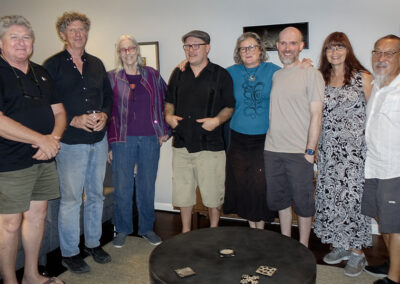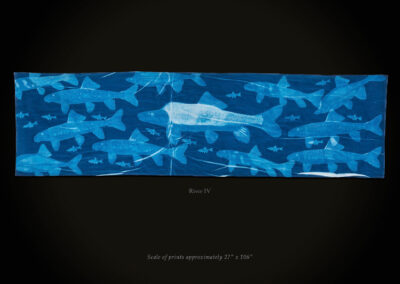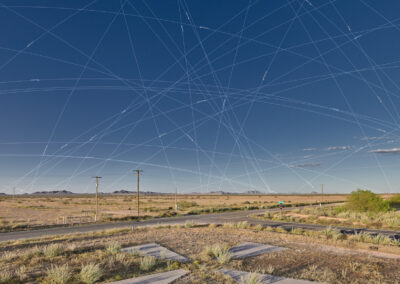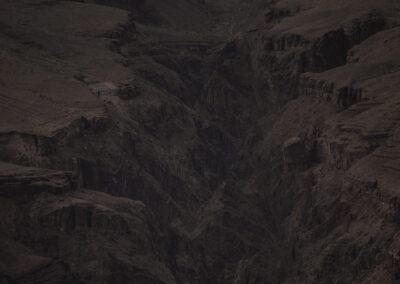Feature Image: from Echoes of the Passage (Mercury 9 Capsule Ablative Shield) © Julie Anand and Damon Sauer
At the end of July, Arizona Photography Alliance gathered for an intimate evening at the home of Julie Anand and Damon Sauer. They have worked as collaborative artists for two decades. Their collaborative work has been featured in Wired, Harper’s, National Geographic, and Hyperallergic among other publications. They have exhibited together nationally and their work is held in public collections including the Center for Art + Environment at the Nevada Museum of Art and the Museum of Fine Arts, Houston. Julie Anand is currently Associate Professor in the School of Art at Arizona State University.
The evening began with a brief tour of their studio rooms to view their most recent projects and then we moved to their living room. Beginning with introductions by Richard Laughran, Julie and Damon shared a presentation of their completed work entitled Ground Truth: Corona Landmarks so we could understand their joint working methods. The Ground Truth project involved documenting dozens of the 272 concrete markers spread equidistantly over a 16 square mile grid in the Sonoran desert around the town of Casa Grande. Each marker resembles a large Maltese cross and was used as a calibration target for the Corona satellite project from the late 1950s through the mid-1960s. The Corona project was a closely guarded secret since it surreptitiously mapped the former Soviet Union airspace during the Cold War. After recording the markers, Julie and Damon have overlayed the skies above the crumbling markers with the tracks of contemporary satellites overhead during the time the markers were being documented. The project bridges the time between the Cold War and the present state of our satellite technology. The nefarious spy programs that spawned fear in the 1950’s has transformed into a benign direction finder for hikers. There is an excellent time-lapse video on their website that recreates the pairs’ process in documenting and constructing the pieces.
A recently completed body of work was Echoes of the Passage. Julie and Damon received special access at Space Houston and the Kennedy Space Center to photograph specimens from the early Mercury capsules through the current Space X ventures on exhibit at the Center. They made intimate details from the surfaces of objects that have travelled into deep space and have returned in a violent re-entry through Earth’s atmosphere. Each object bears witness to the passage revealing burn marks, striations, and stress fractures making each object seem to have its own unique fingerprint from the experience. Julie and Damon said it well in their statement on the project. “We imagine that the objects we photograph may hold auras of embodied experience and we hope that our photographs are likewise vehicles for contemplating going beyond.”
The artists are intentional by using a circular imagery reminiscent of looking through a telescope or microscope. The directional lighting also creates the illusion of planets viewed through a telescope. The images are far more than close-up details of space equipment; there are newly created realms within these spheres. I was impressed that all the bodies of work combine the investigative power of science with a metaphysical understanding of its potential meaning beyond the facts.
Most recently Julie and Damon spent time as artists-in-residence with the Grand Canyon Conservancy. There is always the challenge of how to make the ineffable relevant without relying on the common tropes we have developed to describe the Grand Canyon. One of the most elegant interpretations was done in Canyon Translations. Julie and Damon found a unique combination of style and technique to communicate the reactions of visitors to the Canyon. They created a series of questions for visitors about their experience at the Canyon and about their home. (The cards were translated into the languages most commonly used by Grand Canyon visitors.)
The dozens of interviews represent the variety of ages, nationalities and ethnicities of people who visit the Canyon. Each collaborator was interviewed, recorded and then filmed while looking over a vista of the Canyon. The camera focuses on the speaker as they look toward the camera while the footage plays in slow motion. The participants gaze oscillates slowly from the camera to the vista behind them while their prerecorded narratives play in real time. A shallow depth of field blurs the lines and colors of the Canyon into an illusory haze, momentarily suspending the speakers in this ethereal space. Many of the participants’ descriptions echo our own inadequate language to describe the Canyon experience in a few sentences.
Two other projects that were done during the residency were Chasm and River I-IV. Chasm is a series of large-scale prints echoing the last failing light of dusk as it closes in the Canyon. The prints have dark, subdued shades that reflect the limits of our weakening vision in fading light. It is the Canyon at its most ascetic form. In River I-IV, Julie created large scale cyanotypes on cloth that draw attention to the status of the native species of fish found in the Colorado River drainages. These cloth cyanotype prints were created in collaboration with visitors to the Grand Canyon as public outreach through the artist-in-residence program.
Thank you to Julie and Damon for sharing their place and recent projects. And a special thanks to Richard Laugharn who continues to find wonderful opportunities like this evening for us.
You can see more of these projects and previous works on their website.
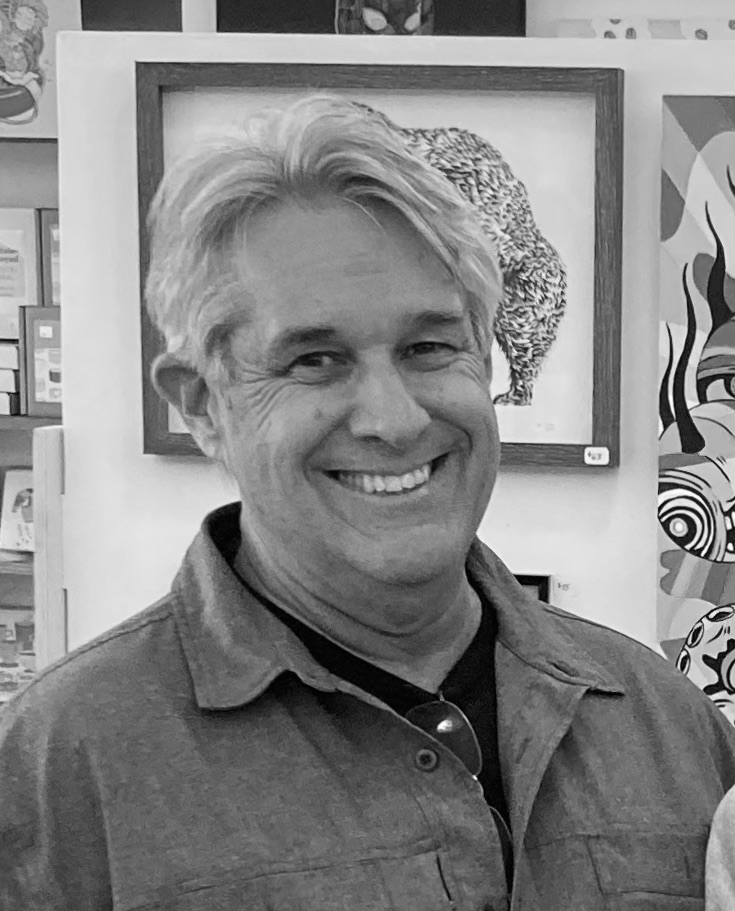
Robert Galloway
Contributing Writer
Originally from Ohio, he received a Bachelor of Fine Art in Art from Ohio State University and then moved to the desert in 1979 to pursue a Master of Fine Art in Photography at Arizona State University. Bob is an emeritus professor from Mesa Community College where he taught photography for 39 years.
In addition to teaching, he was an arts administrator for the Maricopa College District for five years, creating the first district wide literature journals, music competitions and art exhibits.
Bob is very encouraged about the embrace of local arts at a grassroots level and hopes to assist in that growth and development. His photographic experience and interests have been wide ranging. Currently he has been looking at how we are using the desert environment as a performance space.
“It’s really difficult to have a bad day when you wake up in the morning and get to talk about art with people.”
Contact Bob


